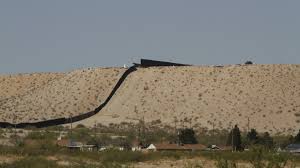Trump administration expands military’s role at the border to the southern tip of Texas

Brownsville, Texas (June 27, 2025) — The Trump administration has expanded its border security measures by placing a 250-mile stretch of the southern Texas border under military control. This move marks the latest step in a broader effort to clamp down on illegal immigration. However, it has sparked growing concern among civil liberties advocates, environmentalists, and local communities.
This new “National Defense Area” (NDA) includes major cities like Brownsville and McAllen. The region now functions as an extension of Joint Base San Antonio. Troops can patrol the area, monitor movements, erect barriers, and temporarily detain individuals until immigration agents take over.
Military Control in a Civilian Zone
For the first time in decades, active-duty soldiers are enforcing border control near American towns. Armored vehicles and drones are operating close to homes, farms, and wildlife refuges.
Lt. Col. Amanda Gaines explained that the military’s role includes “detection, deterrence, and temporary detainment.” The Department of Defense has deployed both Air Force and Navy units. They now assist directly in securing the border, not just in support roles.
The administration justifies this decision by citing national security threats and rising cartel activity. However, critics argue that such actions bypass legal norms.
Legal Experts Sound the Alarm
Legal scholars question whether this expansion violates the Posse Comitatus Act, which restricts military involvement in civilian law enforcement. President Trump’s NSPM-4, signed in April 2025, appears to override that restriction by granting the Pentagon broader authority.
Raúl Martinez, a constitutional law expert from the University of Texas, warned of long-term consequences. “This move creates a legal gray zone,” he said. “Civilians are being policed by the military in peacetime. That’s deeply troubling.”
So far, more than 1,400 individuals have faced trespassing charges for entering military-controlled areas. Judges have issued mixed rulings. Some courts dismissed the cases due to poor signage. Others upheld convictions, leading to jail terms as long as 18 months.
Local Landowners and Citizens Affected
Property owners along the Rio Grande are already feeling the impact. Many say they were not notified in advance. Others have been denied access to parts of their own land.
José Rivera, a rancher near Brownsville, voiced his frustration. “I’ve lived here my whole life, but now I need permission to cross my field,” he said. “It feels like we’re under occupation, not protection.”
Local officials, while supportive of secure borders, believe the approach goes too far. McAllen’s Mayor Javier Peña explained, “We want safety, yes. But we don’t want to lose civil rights in the process.”
Migrants and Aid Groups Face Risks
Humanitarian groups working in the region now face legal and physical risks. Soldiers have blocked volunteers from placing water and supplies along migrant routes. Some aid workers fear arrest, even when acting within the law.
Mariela Domínguez, a lawyer with the Texas Migrant Rights Network, criticized the militarization. “This isn’t about border control anymore. It’s about scaring people into submission,” she said. “Even U.S. citizens are being treated as suspects.”
Some migrants detained by troops did not realize they had crossed into a military zone. Since signs and barriers vary by area, confusion remains widespread.
Environmental and Cultural Costs
The NDA expansion also threatens sensitive habitats and heritage sites. The military presence now stretches into the Lower Rio Grande Valley National Wildlife Refuge. Conservationists worry about vehicle damage, noise pollution, and habitat loss.
Leah Sanchez, director of the South Texas Conservation Alliance, raised an urgent concern. “You can’t run tanks and drones through a wildlife refuge and expect no consequences,” she said. “This is a delicate ecosystem.”
Indigenous leaders also fear that sacred lands and burial sites near the river may suffer harm. Several tribal groups have requested meetings with federal officials to prevent further damage.
Results and Unintended Consequences
Administration officials claim the policy is working. Internal data shows a sharp drop—over 80%—in migrant crossings in the southern Rio Grande area. However, experts say this decline may also reflect tougher asylum rules and faster deportation protocols introduced in recent months.
While security may have improved on paper, the human cost is becoming more visible. Migrants now take more dangerous routes. Meanwhile, locals experience reduced access, constant surveillance, and uncertainty about their rights.
Future Outlook
President Trump appears determined to continue expanding military roles along the border. Officials hint that more NDAs could follow, possibly affecting areas like Big Bend National Park and other public lands.
Whether this approach will survive court challenges remains unclear. Civil rights groups have already filed lawsuits to contest the legality of military enforcement actions in civilian areas.
For now, families, farmers, and humanitarian workers in southern Texas are adjusting to a new reality—one marked by fences, uniforms, and watchful drones.ese zones become permanent fixtures or flashpoints for legal challenge remains to be seen. For now, residents of the Rio Grande Valley live under heightened surveillance, blurred legal boundaries, and the weight of uncertainty.






